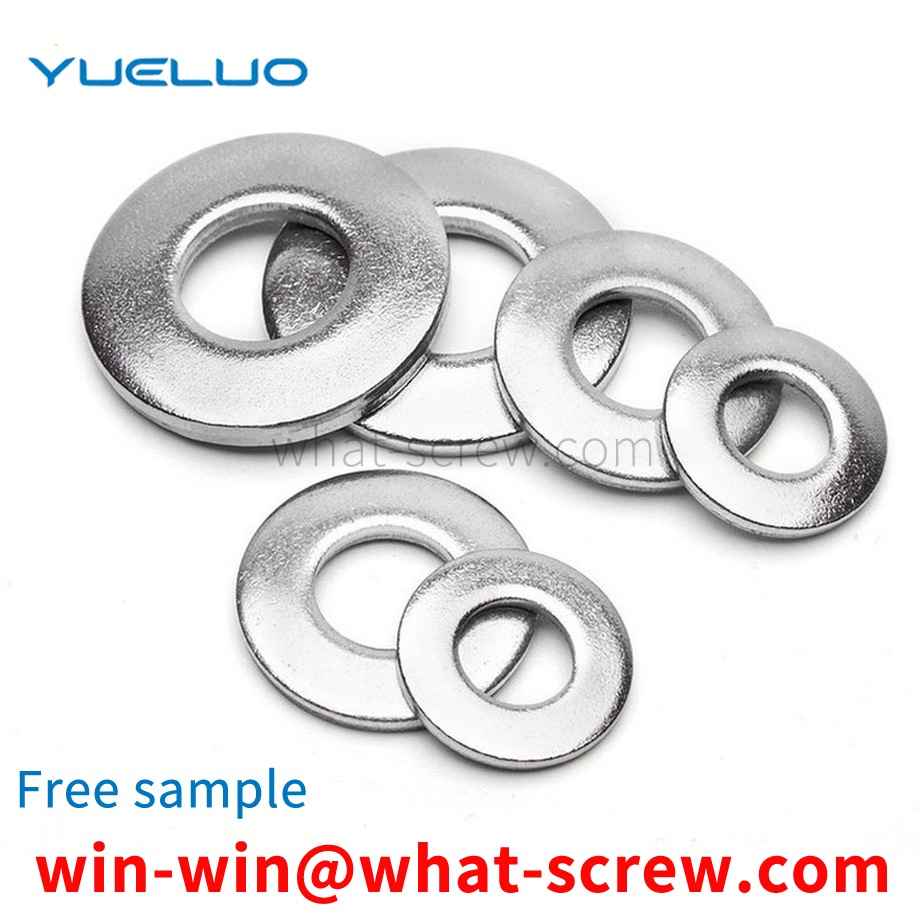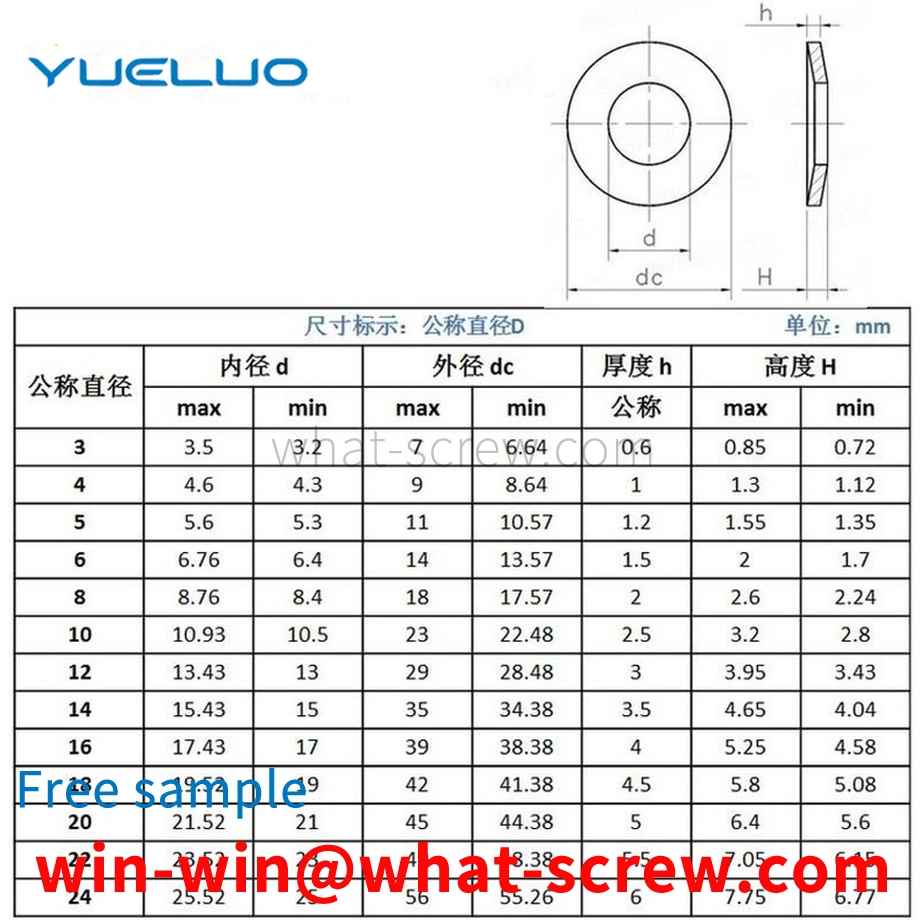A rivet is a nail-shaped object with a cap on one end: in riveting, the parts being riveted are joined by their own deformation or by interference. There are many types of rivets, and they are informal. However, the two ends of conventional rivets are concentric, which is not suitable for special occasions.
A medical self-locking screw, wherein the medical self-locking screw is composed of an outer screw and an inner screw, the outer screw includes a fixedly connected fitting body and the front part of the outer screw, and the front part of the outer screw includes a fixed connection The outer screw rod body and the outer screw head are provided with fixed external threads on the periphery of the outer screw rod body, and a backstop ring is provided on the periphery of the matching body;
Hydraulic wrench or pulling method Use hydraulic torque wrench or puller to fasten large screws, which saves effort and has high precision. However, hydraulic tools are expensive, screws of different sizes need to be equipped with different wrenches, and now the hydraulic pullers in the world are generally only M160×6. If the screws are too large, special specifications or very few in number, it is extremely uneconomical to equip them with hydraulic tightening tools.
Fasteners are a type of mechanical parts that are used for fastening connections and are widely used. They are used in a wide range of industries, including energy, electronics, electrical appliances, machinery, chemicals, metallurgy, molds, hydraulics and other industries. This kind of fastener is a widely used mechanical basic part. It is characterized by a wide variety of specifications, different performance and uses, and a very high degree of standardization, serialization and generalization. Therefore, some people also refer to a type of fasteners with existing standards as standard fasteners, or simply as standard parts.
High-strength fasteners must be quenched and tempered according to technical requirements. The purpose of heat treatment and tempering is to improve the comprehensive mechanical properties of fasteners to meet the specified tensile strength value and yield ratio of the product. The heat treatment process has a crucial impact on high-strength fasteners, especially its intrinsic quality. Therefore, in order to produce high-quality high-strength fasteners, advanced heat treatment technology and equipment must be available. Due to the large production volume and low price of high-strength bolts, and the threaded part is a relatively fine and relatively precise structure, the heat treatment equipment is required to have large production capacity, high degree of automation, and good heat treatment quality. Since the 1990s, the continuous heat treatment production line with protective atmosphere has dominated, and the shock bottom type and mesh belt furnace are especially suitable for heat treatment and tempering of small and medium-sized fasteners. In addition to the good sealing performance of the furnace, the quenching and tempering line also has advanced computer control of atmosphere, temperature and process parameters, equipment failure alarm and display functions. High-strength fasteners are automatically controlled and operated from feeding-cleaning-heating-quenching-cleaning-tempering-coloring to offline, which effectively ensures the quality of heat treatment. The decarburization of the thread will cause the fastener to trip before the resistance required by the mechanical properties is reached, which will cause the failure of the threaded fastener and shorten the service life. Due to the decarburization of the raw material, if the annealing is improper, the decarburized layer of the raw material will be deepened. In the process of quenching and tempering heat treatment, some oxidizing gas is generally brought in from outside the furnace. The rust of the bar wire or the residue on the surface of the wire rod after cold drawing will also decompose after being heated in the furnace, and some oxidizing gases will be generated by the reaction. For example, the surface rust of steel wire, which is composed of iron carbonate and hydroxide, will be decomposed into CO₂ and H₂O after heating, thus aggravating decarburization. Studies have shown that the degree of decarburization of medium carbon alloy steel is more serious than that of carbon steel, and the fastest decarburization temperature is between 700 and 800 degrees Celsius. Because the attachments on the surface of the steel wire decompose and synthesize carbon dioxide and water very quickly under certain conditions, if the furnace gas of the continuous mesh belt furnace is not properly controlled, it will also cause excessive decarburization of the screw. When the high-strength bolt is formed by cold heading, the raw material and the annealed decarburized layer not only still exist, but also are extruded to the top of the thread. For the surface of the fastener that needs to be quenched, the required hardness cannot be obtained. Its mechanical properties (especially strength and wear resistance) decreased. In addition, the surface of the steel wire is decarburized, and the surface layer and the internal structure have different expansion coefficients, and surface cracks may occur during quenching. For this reason, during quenching and heating, the top of the thread should be protected from decarburization, and the fasteners whose raw materials have been decarburized should be properly carbonized, and the advantages of the protective atmosphere in the mesh belt furnace should be adjusted to the original carbon-coated parts. The carbon content is basically the same, so that the decarburized fasteners are slowly restored to the original carbon content. The carbon potential is preferably set at 0.42% - 0.48%. The carbon coating temperature is the same as the quenching heating, and cannot be carried out at high temperatures , so as to avoid coarse grains and affect mechanical properties. The quality problems that may occur in the process of quenching and tempering of fasteners mainly include: insufficient hardness in the quenched state; uneven hardness in the quenched state; excessive quenching deformation; quenching cracking. Such problems in the field are often related to raw materials, quenching heating and quenching cooling. Correctly formulating the heat treatment process and standardizing the production operation process can often avoid such quality accidents.
We have many years of experience in the production and sales of screws, nuts, flat washers, etc. The main products are: lifting round nuts, external teeth, flat head pressure riveting nuts wholesale, plastic and plastic screws and other products, we can provide you with fastening suitable for you piece solution.



















 Service Hotline
Service Hotline




